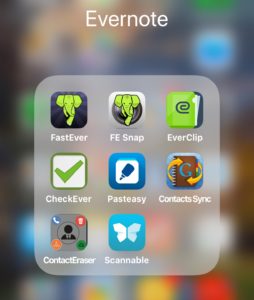

Save time: Scannable automatically rotates, crops, and adjusts images so your scans are clear and easy to read. Scan fast: Point your camera at documents, expense receipts, or whiteboards. Save or share documents instantly and move on.Īutomatically capture high-quality scans anywhere Scan contracts, receipts, business cards, and any paper that comes your way. To avoid this sort of self inflicted lock in, I prefer the embedded OCR done before importing.Scannable moves paper forward. If the OCR is in the attachment, it will go with the attachment even when I need to move it elsewhere.

So once you leave EN (which I am not planning for, but just in case …), you can take your documents, but without the OCR. It stores it into the notes metadata, or somewhere into a database. There is one other aspect why I do not much rely on the EN OCR: EN is not embedding the OCR results into the attachment. Heavily designed text is tricky for all OCR software. With all standard text it will do a very good job.

You can check yourself, with the picture / text views build into the app. I think usually ScannerPro does a good job with OCR. So it depends on the OCR quality of the 3rd party software. It is quite simple: If there is a text layer embedded into a pdf, EN will not OCR it again. And I wonder about the ability of EN to find text within OCR'd documents from other sources. But I am finding it struggles with some things lately and has me questioning it. This is what I have been doing - especially since ScannerPro OCR got so much better with v8. All the options would be present in the search metadata for that note. Plus image recognition is more scattergun - a sign saying 'house for sale' might be interpreted as house, hearse or horse - and a search for any of the three would turn up this image. but searches are more hit and miss depending on focus and resolution.

Images are always visible inline unless you specifically choose that they are not. My choices depend on what is currently available to scan the item in question, and whether we're scanning for a multi-page document I will need for reference, or imaging a tear-down summary of how my phone goes together during a repair. I also use my Samsung phone for ad-hoc scanning (using one of several apps, most frequently Evernote) and pictures when out and about - also images where the object I want to 'scan' has more corners than will fit into my scanners. What I have a ScanSnap sheet-fed scanner and an Epson photo printer/ scanner - one for documents and the other for 'serious' photo scans.


 0 kommentar(er)
0 kommentar(er)
